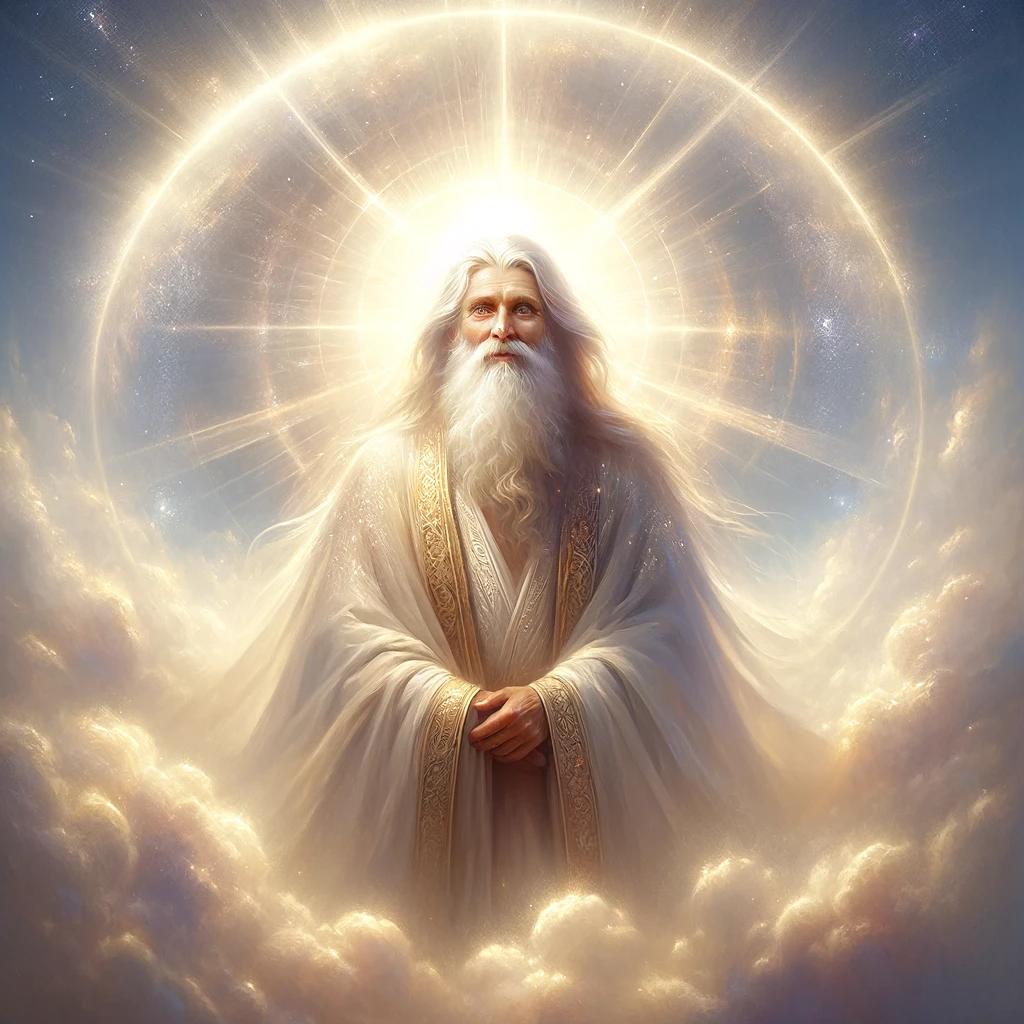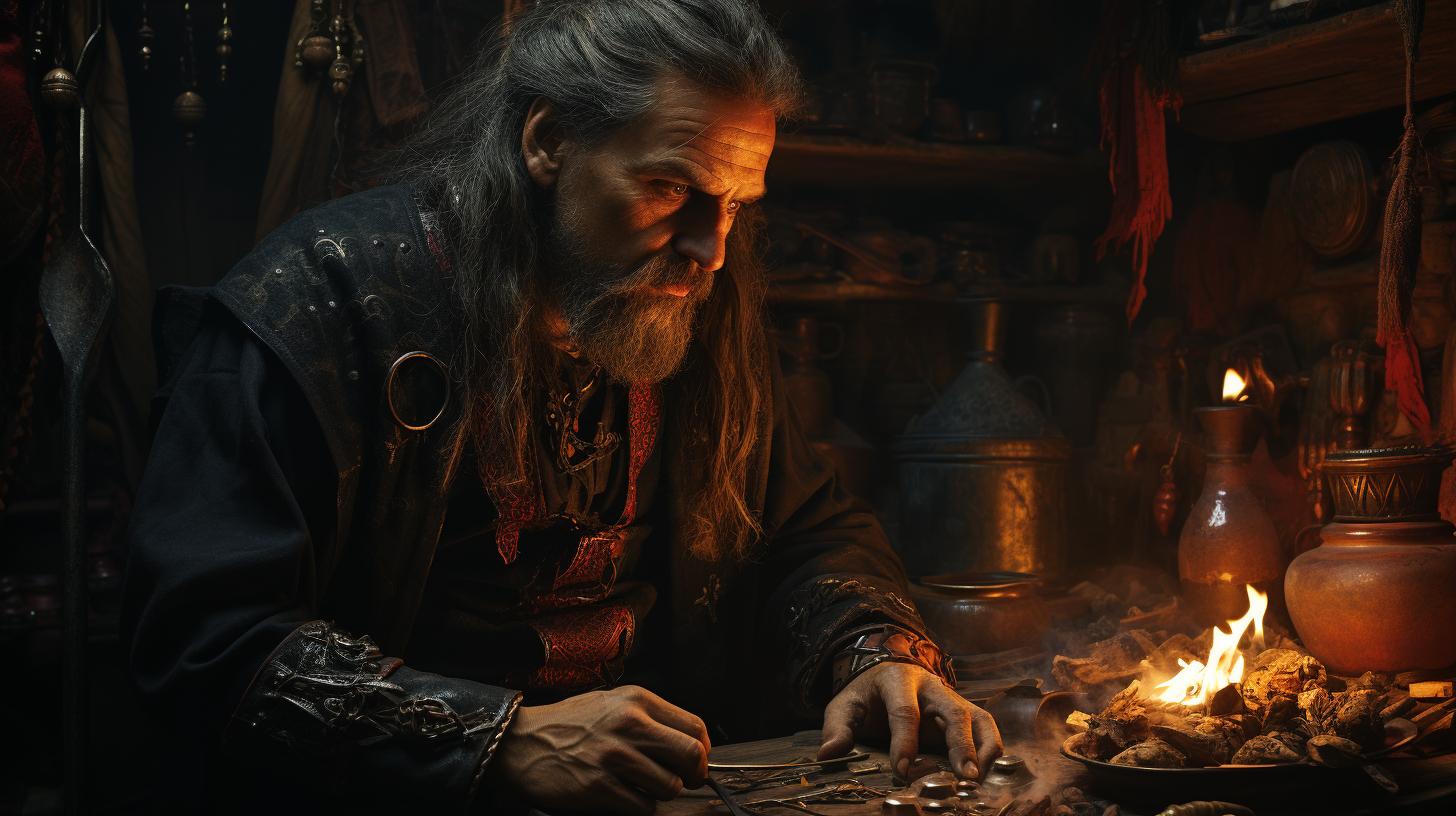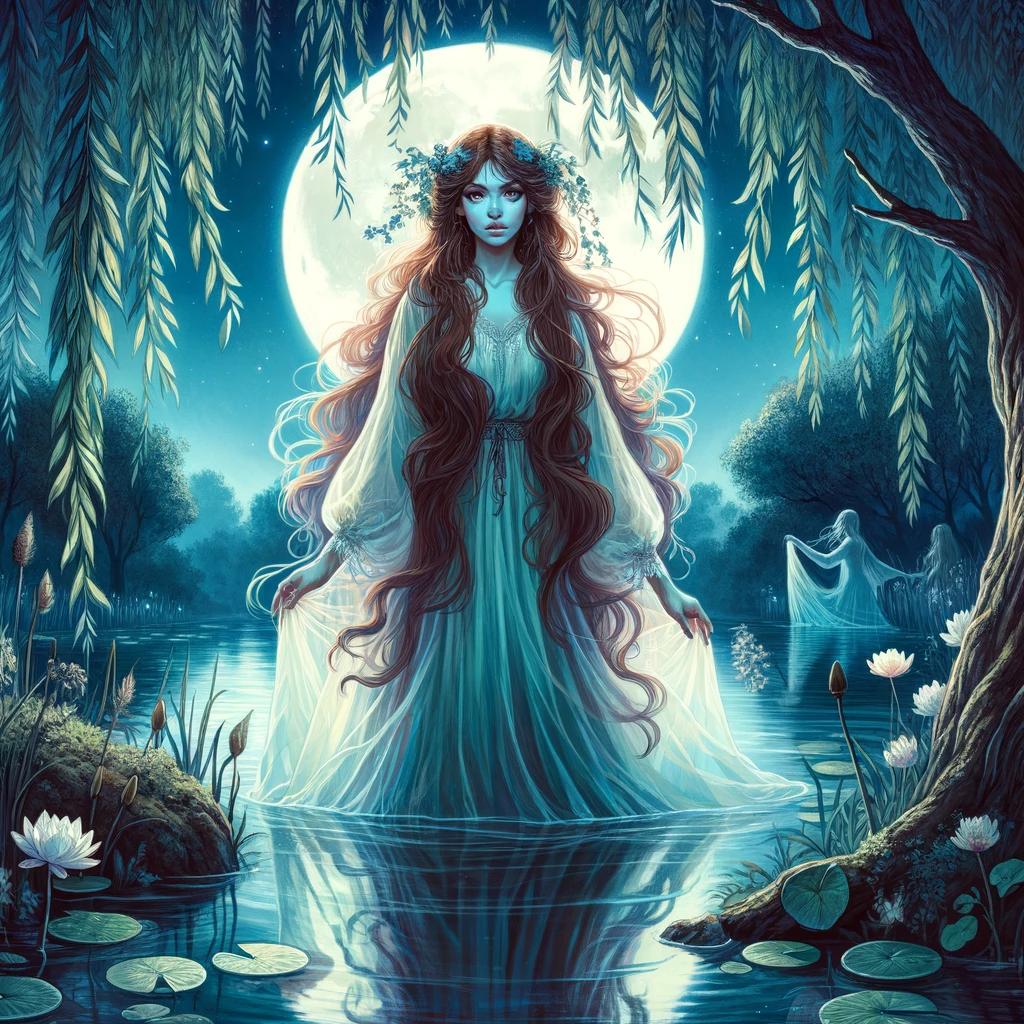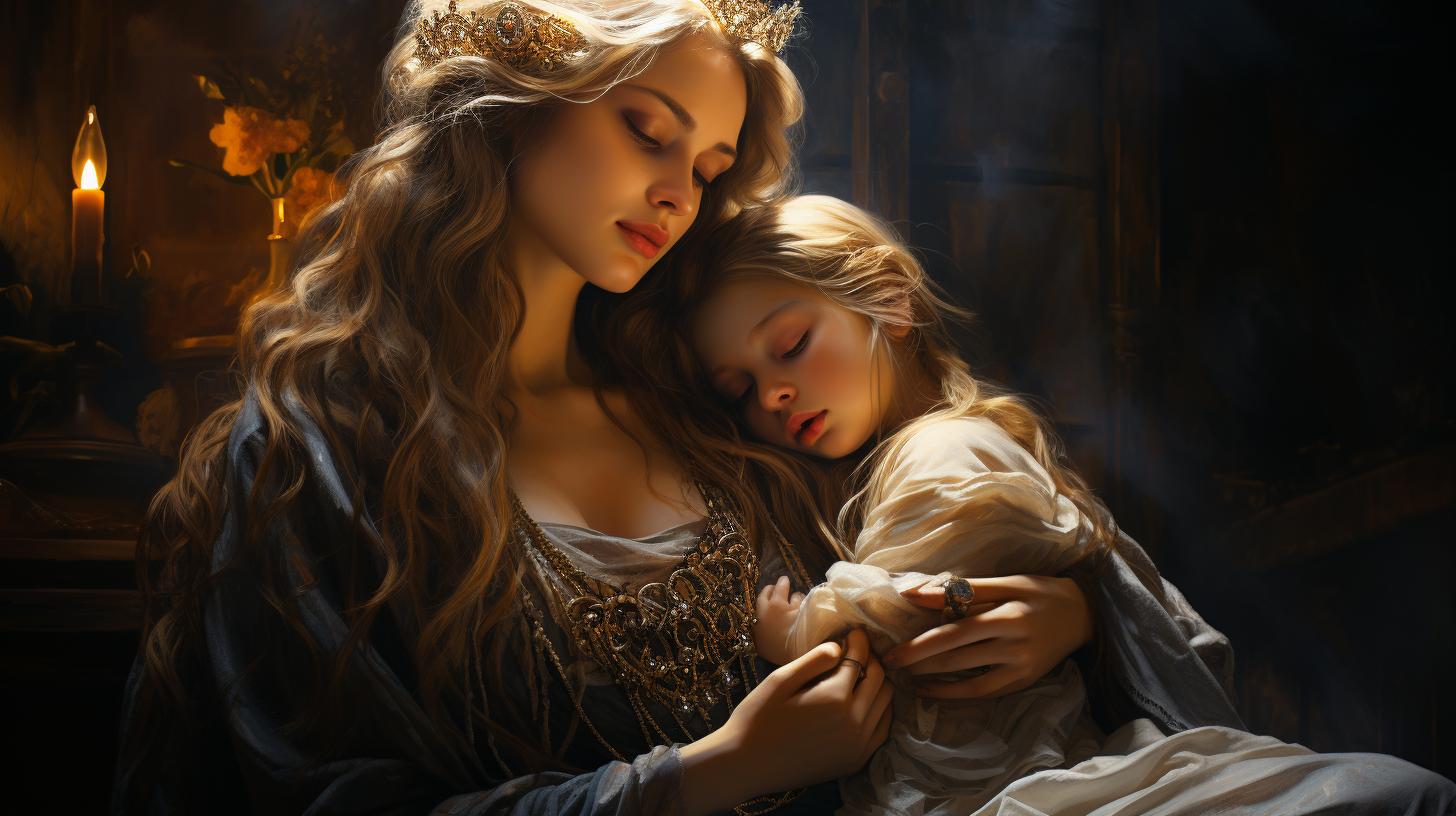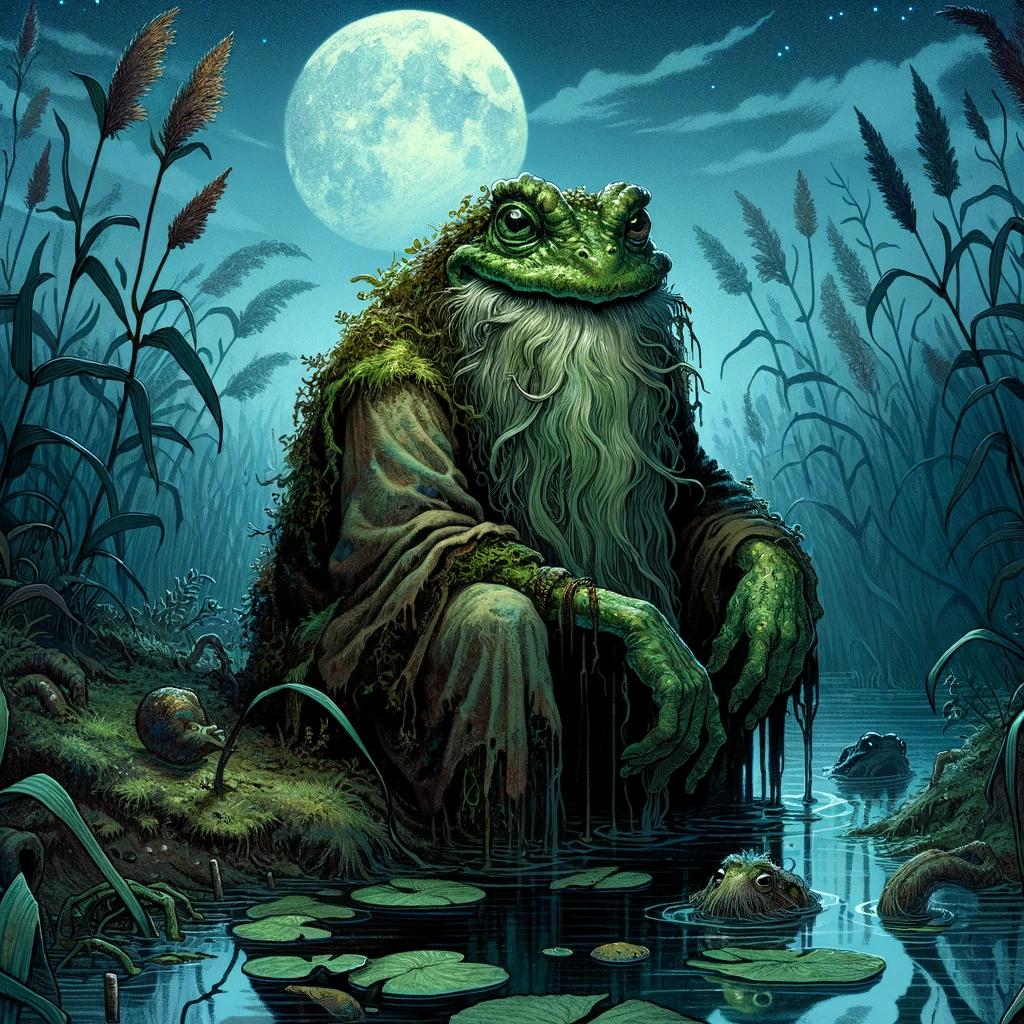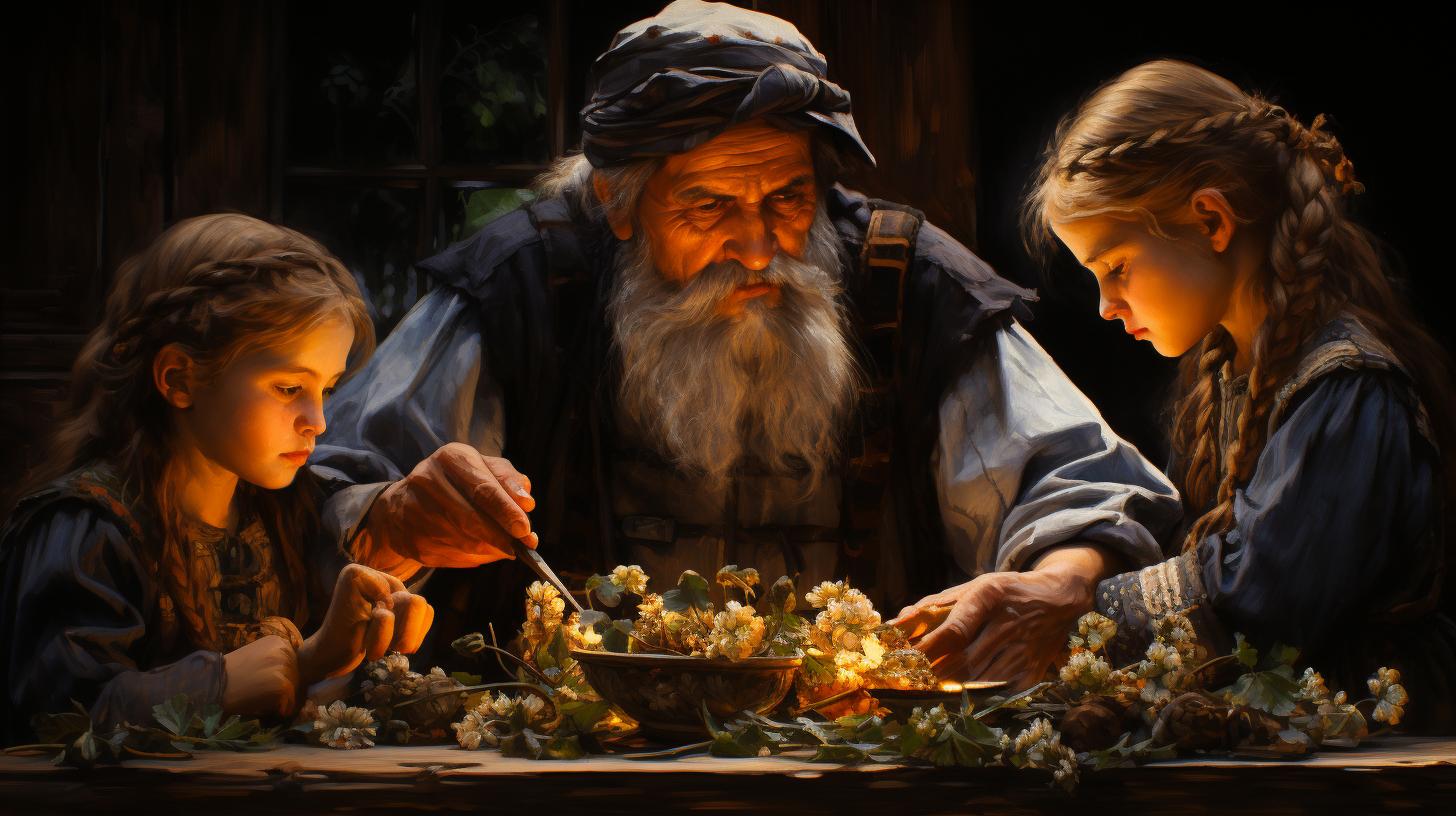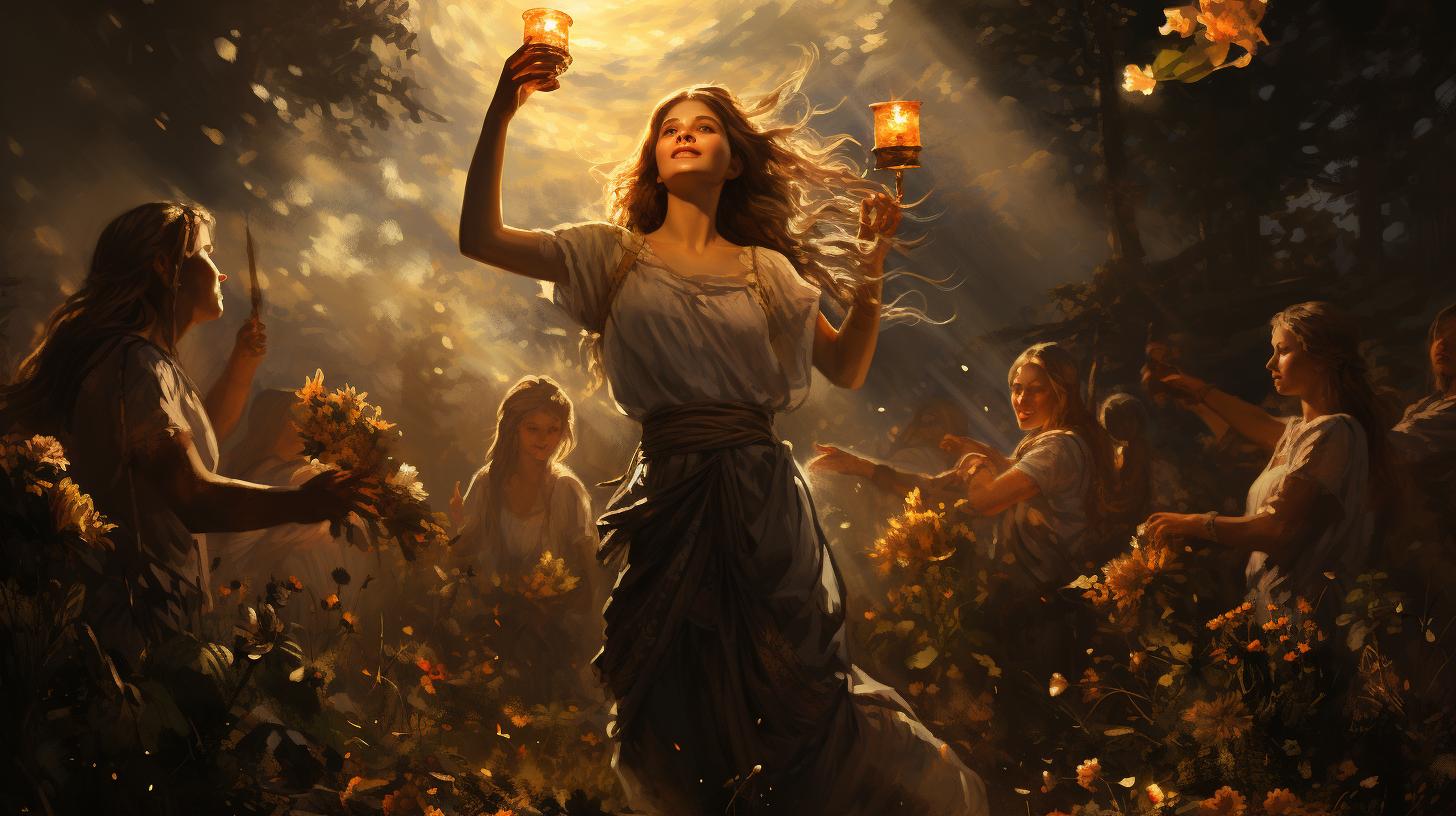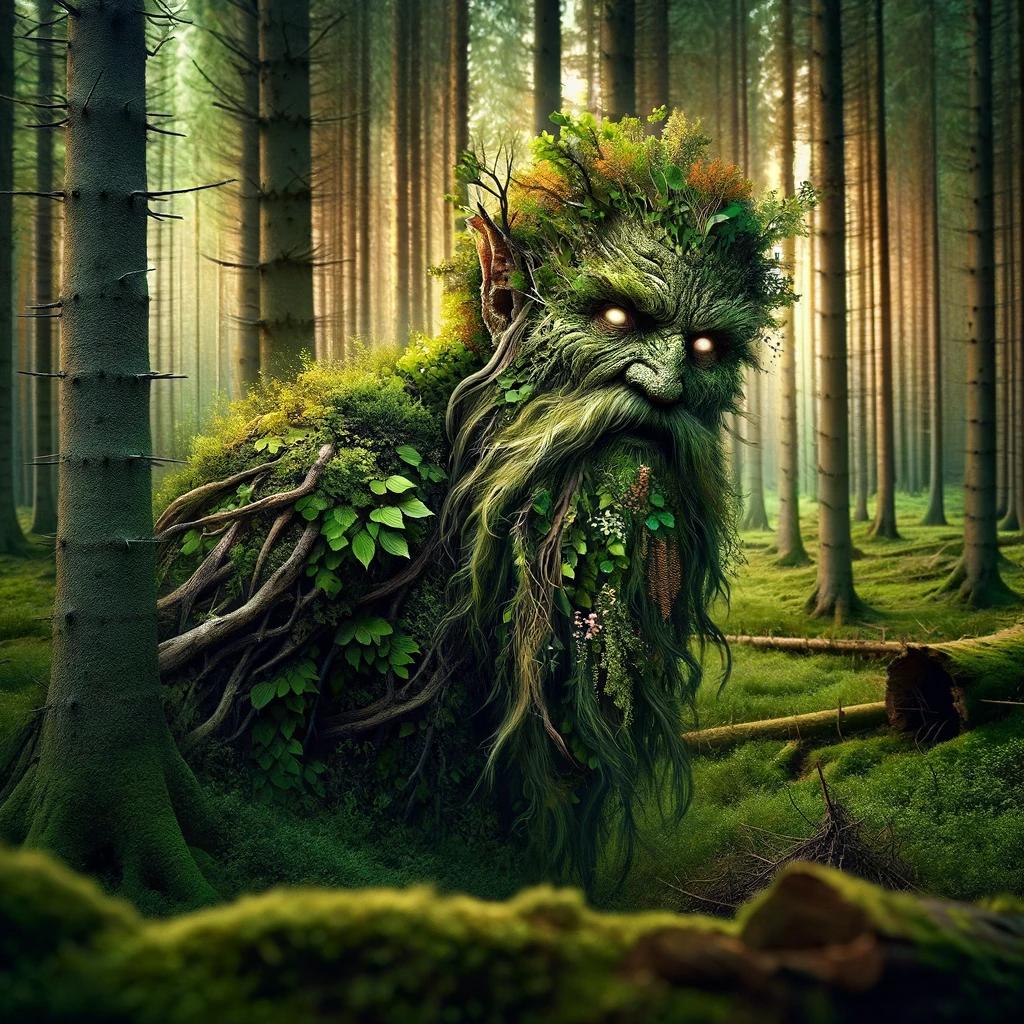Discover the Fascinating World of Jarilo, the Slavic God: Exploring the Deity’s Role in Spring, Fertility, and Renewal
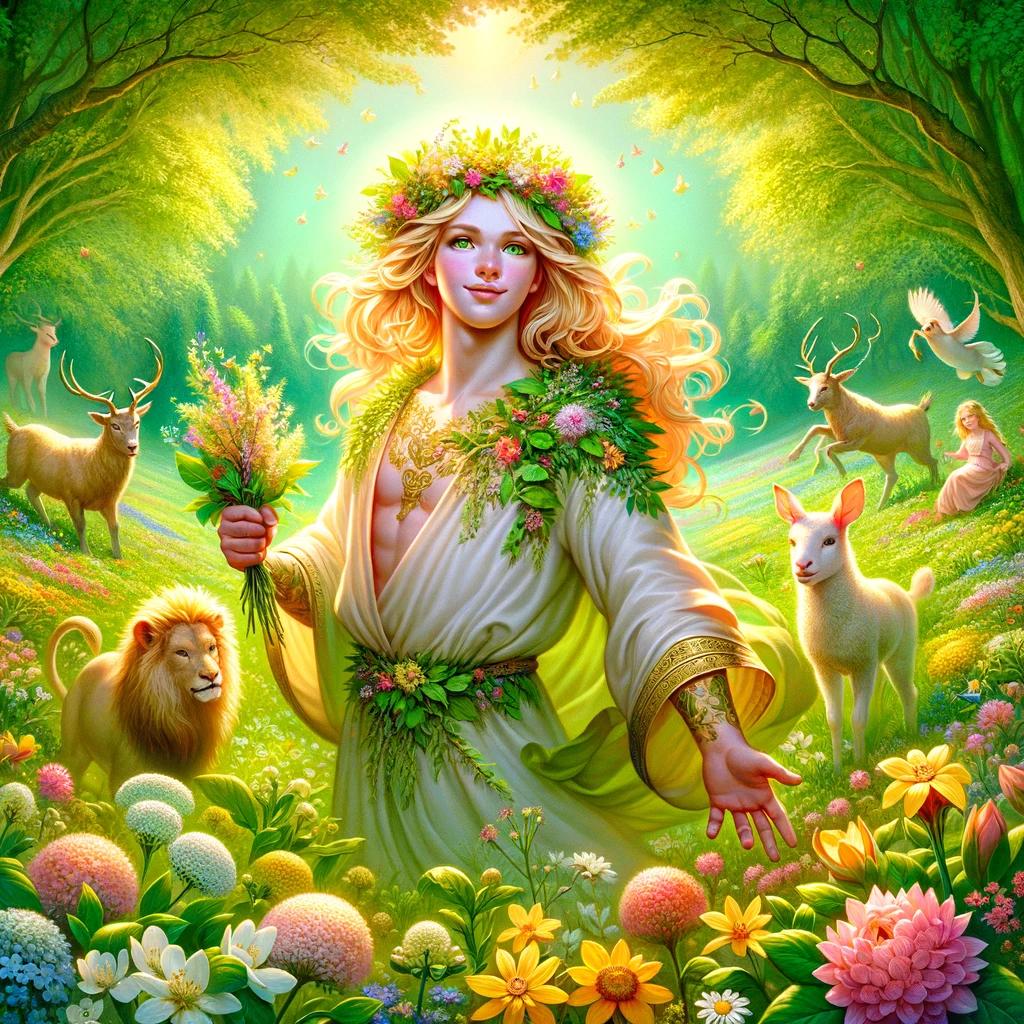
Jarilo, the Slavic god, holds a significant role in ancient mythology. Representing spring, fertility, and war, he embodies the youthful vitality and energy of the season. Born during the festival of Velja Noć, Jarilo is the tenth and final child of Perun, the supreme god of thunder.
His return from the underworld brings fertility and life to the land, celebrated during Jurjevo/Jarilo and Ivanje festivals. The cycle of death and rebirth, symbolized by Jarilo’s relationship with the goddess Morana, is central to his mythological story.
Jarilo’s influence extends to contemporary culture, with his depiction in literature, art, and pop culture.
Slavic Mythology: Understanding the Ancient Beliefs and Traditions
Slavic mythology holds a rich tapestry of ancient beliefs and traditions that have shaped the cultural identity of the Slavic people. From the origins and significance of Slavic gods to the exploration of the pantheon of deities, there is much to discover about this fascinating mythology.
The Origins and Significance of Slavic Gods
Unveiling the roots of Slavic gods reveals a deep connection with nature and the acknowledgment of natural forces. These deities played a vital role in Slavic lives, serving as intercessors between the mortal realm and the spiritual realm.
Exploring the origins and significance of these gods offers insights into the worldviews and beliefs of the ancient Slavic civilization.
Exploring the Pantheon of Slavic Deities
The pantheon of Slavic deities is vast and diverse, reflecting the multifaceted nature of their beliefs. From powerful gods like Perun, the supreme god of thunder, to goddesses like Morana, associated with death and nature, each deity holds a specific domain and function within the mythology.
Delving into the pantheon allows us to grasp the complexity and symbolism behind these divine figures.
The Role of Slavic Mythology in Cultural Identity
Slavic mythology not only shaped religious beliefs but also played a crucial role in shaping the cultural identity of Slavic communities. Beliefs, rituals, and stories tied to these ancient mythological traditions influenced various aspects of life, including art, literature, and social practices.
Understanding the role of Slavic mythology in cultural identity provides a deeper appreciation for the rich heritage of the Slavic people.
Jarilo: The Slavic God of Spring, Fertility, and War
Welcome to the enchanting world of Jarilo, the Slavic god associated with the rejuvenation and vitality of spring, fertility, and the ferocity of war.
Unveiling the origins and symbolism of this deity sheds light on the rich cultural and spiritual significance within Slavic mythology.
Who was Jarilo? Unveiling the Deity’s Origins and Symbolism
Jarilo emerges as a prominent figure in Slavic mythology, embodying the essence of youth and the life-giving forces of nature. As we delve into the origins of Jarilo, his divine lineage can be traced back to Perun, the supreme god of thunder.
Understanding the symbolism behind Jarilo’s name and characteristics provides deeper insights into his significance within the Slavic pantheon.
Jarilo’s Connection to Vegetation, Fertility, and the Spring Season
Central to Jarilo’s domain is his association with vegetation, growth, and the rebirth of the natural world during the arrival of spring. Explore the intricate interplay between Jarilo and the changing seasons, as his divine presence rejuvenates the earth, fostering fertility, and ensuring bountiful harvests for the Slavic people.
Discover the rituals and celebrations dedicated to Jarilo during this time of renewal.
How Jarilo’s Dual Nature as a God of War and Fertility Interacts
Inexplicably intertwined with his role as a god of fertility, Jarilo also possesses a fierce and warlike side. Delve into the mythological tales that illustrate the delicate balance between Jarilo’s nurturing attributes and his participation in the tumultuous world of battle and conflict.
Understand the symbolism behind this dual nature and how it intertwines with the cycle of life and death, reflecting the complexities of the human experience.
The Mythological Family Dynamics: Jarilo, Perun, and Veles
The mythological family dynamics surrounding Jarilo, Perun, and Veles provide insight into the complex relationships and conflicts among Slavic gods.
Jarilo’s Paternity: Perun, the Supreme God of Thunder
Jarilo, the Slavic god of spring, fertility, and war, is believed to be the tenth and final child of Perun, the supreme god of thunder. Perun, known for his power and authority, played a prominent role in Slavic mythology as the ruler of the skies and the bringer of thunderstorms.
The paternity of Jarilo highlights the importance and significance of his divine lineage.
The Mysterious Role of Veles in Jarilo’s Birth and Upbringing
Veles, the Slavic god of the underworld and livestock, plays a mysterious and controversial role in the birth and upbringing of Jarilo. According to mythology, Perun entrusts Veles with the care of Jarilo, taking him away from the mortal world.
This connection between Jarilo and Veles symbolizes the interplay between the realms of the living and the dead, reflecting the Slavic belief in the cycle of life and death.
The Interplay between Jarilo and Other Slavic Gods: Relationships and Conflicts
Jarilo’s interactions with other Slavic gods reveal a complex web of relationships and conflicts.
While Jarilo is often associated with fertility and spring, his dual nature as a god of war brings him into conflict with other deities. This interplay between Jarilo and the rest of the pantheon reflects the multifaceted nature of Slavic mythology, where gods are not restricted to single domains but often have overlapping roles and responsibilities.
The Festival of Jarilo and the Celebration of Renewal
Within Slavic mythology, the festival of Jarilo holds great significance as it commemorates the return of the god and the rejuvenation of the land. This festival, also known as Jurjevo/Jarilo, marks the transition from winter to spring and symbolizes the rebirth of life.
Jurjevo/Jarilo: Exploring the Festivities Honoring Jarilo’s Return
During Jurjevo/Jarilo, communities come together to celebrate the revival of Jarilo and the arrival of spring. The festivities involve various rituals and traditions that aim to invoke the god’s blessings for abundant crops, fertility, and protection from evil spirits.
- Processions: People gather to form joyful processions, carrying effigies and symbols representing Jarilo. These processions often weave through fields and villages, symbolizing the god’s journey from the underworld back to the earthly realm.
- Dancing and Music: Lively dances and music fill the air, reflecting the joy and vitality associated with the arrival of Jarilo.
Traditional songs and melodies are performed, invoking the spirit of the season and fostering a sense of community and shared celebration.
- Bonfires and Offerings: Bonfires are lit, symbolizing the triumph of light over darkness and the warmth that accompanies the spring season.
Participants offer various items, such as food, flowers, and symbolic representations of fertility, as a token of gratitude and reverence to Jarilo.
Ivanje/Ivan Kupala: The Sacred Union of Jarilo and Morana in the Summer Solstice Festival
In addition to Jurjevo/Jarilo, another important festival that celebrates the renewal of Jarilo and the onset of summer is Ivanje/Ivan Kupala. This festival marks the sacred union between Jarilo and Morana, the goddess of death and nature.
It takes place during the summer solstice, a time of heightened energy and abundance.
- Bathing Rituals: Water holds great significance during Ivanje/Ivan Kupala. Participants engage in bathing rituals, often in rivers or lakes, to purify themselves and partake in the rejuvenating properties of water.
It is believed that jumping over bonfires during this festival brings good luck and ensures fertility and protection.
- Floral Crowns and Wreaths: Participants adorn themselves with floral crowns and wreaths, symbolizing the beauty and vitality of the natural world.
These intricate headpieces are made with various flowers and herbs, reflecting the rich diversity of the summer season.
- Nighttime Festivities: As the festival unfolds, various nighttime activities take place, including dancing, games, and the pursuit of a hidden treasure, often represented by a flower or a spiritual relic.
These rituals symbolize the eternal cycle between life and death, highlighting Jarilo and Morana’s intertwined destinies.
Symbolism and Traditions in the Spring Festivals Dedicated to Jarilo
The spring festivals dedicated to Jarilo are replete with symbolism and traditions that showcase the deity’s role in renewal and growth.
- Greenery and Flowers: The use of greenery, such as branches and leaves, and the prominence of flowers in these festivals represent the vibrant life force that emerges in spring.
They symbolize the blossoming of nature and serve as a reminder of Jarilo’s role in fertility and abundance.
- Feasting and Merriment: A key aspect of these festivals is the conviviality and feasting.
Communities gather to share food and drink, celebrating the bountiful harvests and the return of abundance. This communal feasting fosters a sense of unity and gratitude for the gifts bestowed by Jarilo.
- Rites of Passage: The spring festivals also encompass rites of passage, marking the transition from winter’s darkness to the vibrant energy of spring.
Rituals such as initiations, blessings, and purification ceremonies serve as a collective reaffirmation of Jarilo’s blessings and the renewal of life.
Jarilo’s Relationship with Morana: Life, Death, and Rebirth
Explored in this section is the profound connection between Jarilo, the Slavic god of spring, fertility, and war, and Morana, the goddess of death and nature.
Their bond represents the intricate balance between life and death, creation and destruction within the Slavic mythology.
The Mythical Romance: Jarilo and Morana’s Sacred Bond
At the core of Jarilo’s story lies a spellbinding romance with Morana. Together, they personify the cyclic nature of existence, highlighting the inevitable intertwining of life and demise. This sacred bond serves as a symbolic representation of the perpetual dance between growth and decay, love and loss.
Understanding the Cycle of Death and Renewal in Jarilo’s Story
A deeper insight into Jarilo’s narrative unveils a cyclical pattern of death and rebirth. Through his infidelity with Morana, Jarilo meets his demise, signifying the end of fertility and the arrival of winter.
However, this marks the beginning of a new cosmic cycle, where Morana utilizes parts of Jarilo’s body to construct her dwelling, initiating the renewal of the cosmos and the eventual return of spring.
The Cosmic Significance of Jarilo and Morana’s Annual Resurrection
The annual resurrection of Jarilo and Morana carries profound cosmic significance for the Slavic mythology. It symbolizes the eternal rhythm of nature, the rejuvenation of the Earth, and the continuous cycle of life.
Their resurrection reaffirms hope, fertility, and the rekindling of the divine forces that drive the natural world forward.
Jarilo in Slavic Mythology and Folklore: Legends and Folk Songs
Jarilo, the Slavic god of spring, fertility, and war, is a prominent figure in the rich tapestry of Slavic mythology and folklore. His legends and mythical tales have captivated generations, offering insights into the ancient beliefs and traditions of the Slavic people.
Mythological Tales Featuring Jarilo’s Exploits and Adventures
Throughout Slavic mythology, various stories highlight Jarilo’s heroic feats and adventures. Tales describe his battles against mythical creatures, his journey through different realms, and his encounters with gods and goddesses.
These narratives paint a vivid picture of Jarilo’s courage, strength, and significance in the Slavic pantheon.
Folk Songs and Poetic Expressions Depicting Jarilo’s Role and Influence
The cultural legacy of Jarilo extends beyond myths and legends, finding expression in the folk songs and poetic traditions of the Slavic people. These songs, passed down through generations, celebrate Jarilo’s role as the bringer of spring, fertility, and renewal.
They evoke images of blooming landscapes, the joy of life, and the hope associated with the god’s return.
The Cultural Legacy of Jarilo in Slavic Art, Literature, and Music
Jarilo’s influence transcends mythology and folk traditions, leaving an indelible mark on Slavic art, literature, and music. Artists have depicted Jarilo in paintings and sculptures, capturing his youthful vigor and divine attributes.
Writers and poets have drawn inspiration from Jarilo, weaving his stories into their works. Furthermore, musicians have composed melodies and songs that pay homage to his role in Slavic culture.
The cultural legacy of Jarilo serves as a testament to his enduring significance in Slavic folklore and artistic expressions, showcasing his impact on the collective imagination of the people.
Jarilo’s Cult and Worship: Traditions and Rituals in Slavic Paganism
Introduction
Jarilo’s cult and worship hold a prominent place in Slavic paganism, encompassing a rich tapestry of ancient traditions and rituals. This section explores the practices dedicated to Jarilo, shedding light on the customs followed by Slavic communities in adoration of this revered deity.
Ancient Ceremonies and Offerings Dedicated to Jarilo
Ancient Slavic ceremonies devoted to Jarilo were characterized by their reverence for the god’s role as a symbol of spring, fertility, and war. Worshippers celebrated Jarilo’s arrival and sought his blessings through solemn rituals carried out in sacred spaces.
- Spring Awakening: Each year, communities marked the return of Jarilo with joyous festivities and vibrant processions, welcoming his influence on the revival of nature and the onset of a fruitful season.
- Offerings of Abundance: Followers brought offerings of fresh flowers, fruits, and grains to honor Jarilo’s agricultural and fertility associations, seeking his favor for bountiful harvests and prosperous livelihoods.
- Ritual Dances and Music: Ceremonies often involved lively dances and music, incorporating rhythmic movements and melodic chants to invoke the presence and blessings of Jarilo.
The Spread of Slavic Paganism and Jarilo’s Worship Practices
Slavic paganism and the worship of Jarilo gradually spread across the vast territories inhabited by Slavic tribes, diversifying the rituals and practices followed in different regions.
Jarilo’s cult gained significant prominence and influenced various aspects of Slavic cultural identity.
- Regional Variations: Different Slavic communities developed their unique practices for worshipping Jarilo, blending local customs with the overarching reverence for the deity’s attributes.
- Sacred Sites: Seeking a deeper connection with Jarilo, his followers established sacred sites and sanctuaries where rituals and pilgrimages were conducted, fostering a stronger sense of spiritual and communal unity.
- Influence on Daily Life: Jarilo’s worship permeated various aspects of Slavic society, encompassing not only religious rituals but also influencing agricultural practices, seasonal celebrations, and the establishment of social norms.
The Decline and Revival of Slavic Paganism: Jarilo’s Place in Modern Practice
Slavic paganism faced significant challenges due to external influences, such as the spread of Christianity and political transformations, leading to the eventual decline of traditional worship practices.
However, the legacy of Jarilo endures, with ongoing efforts to revive and reconnect with ancient Slavic traditions.
- Contemporary Revival: In recent decades, there has been a growing interest in reviving Slavic paganism, including the worship of Jarilo, as individuals and communities seek to reclaim and preserve their cultural heritage.
- Reconstructionist Movements: Reconstructionist groups dedicated to Slavic paganism strive to reconstruct the beliefs, rituals, and practices of ancient Slavs, incorporating historical research and archaeological findings into their worship of Jarilo.
- Continuity and Adaptation: Modern practices often blend traditional elements with contemporary interpretations, highlighting the resilience and adaptability of Jarilo’s worship within the framework of modern Slavic paganism.
Jarilo in Contemporary Culture: Influence and Adaptation
Jarilo’s Role in Modern Literature, Movies, and Pop Culture
Jarilo, the Slavic god of spring, fertility, and war, has left a significant impact on modern culture.
His captivating characteristics and mythological significance have found their way into various forms of artistic expression.
1. Jarilo frequently appears in contemporary literature, adding a touch of Slavic mythology to gripping tales that captivate readers.
Authors draw inspiration from his complex nature as a deity associated with both war and fertility, making him a compelling character in fantasy novels and epic fiction.
2. Cinema has also embraced Jarilo’s allure.
Movies influenced by Slavic mythology often incorporate his story and symbolism, weaving them into captivating narratives that explore themes of renewal, devotion, and transcendence.
3. Jarilo’s popularity extends beyond the realms of literature and film.
His fascinating attributes have found their way into pop culture, appearing in various forms such as artwork, graphic novels, video games, and even fashion. Through these mediums, Jarilo continues to capture the imagination of modern audiences.
Exploring Jarilo’s Representation in Fantasy and Epic Fiction
Fantasy and epic fiction genres have taken a particular interest in Jarilo and his mythological significance. Authors and storytellers have embraced the rich tapestry of Slavic mythology, incorporating Jarilo’s story, symbolism, and character traits into their narratives.
1. Jarilo’s archetype as a youthful, virile god associated with fertility and the vibrant energy of spring resonates with readers seeking tales of growth, passion, and the cyclical nature of life.
2. In fantasy literature, Jarilo often takes on the role of a pivotal deity, driving the plot forward with his interpersonal relationships, conflicts, and his ability to bridge the realms of life and death.
3. The themes surrounding Jarilo’s complex nature as a god of war and fertility create rich storylines exploring duality, sacrifice, and the balance between life and destruction.
The Enduring Legacy of Jarilo in Artistic and Cultural Expressions
Jarilo’s impact on artistic and cultural expressions remains strong, continuing to inspire and influence creative works around the world.
1. Artists are fascinated by Jarilo’s symbolism and his connection to spring, growth, and rebirth. His depictions in visual arts often emphasize his youthful appearance, adorned with symbols of vegetation and fertility.
2. Jarilo’s story has become a muse for musicians, inspiring compositions that evoke the themes of his mythological journey, from the darkness of the underworld to the vibrant energy of spring.
3. Cultural events and festivals dedicated to Slavic traditions often incorporate Jarilo’s imagery, bringing his essence to life through dance, theater, and other forms of performance art.
In conclusion, Jarilo’s influence extends far beyond ancient Slavic mythology.
His presence in contemporary culture is evident in literature, movies, pop culture, and various forms of artistic expression. Jarilo’s archetypal themes and enduring legacy continue to captivate and inspire audiences, ensuring his place in the cultural fabric of modern society.
.











